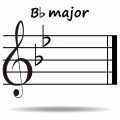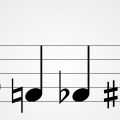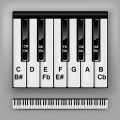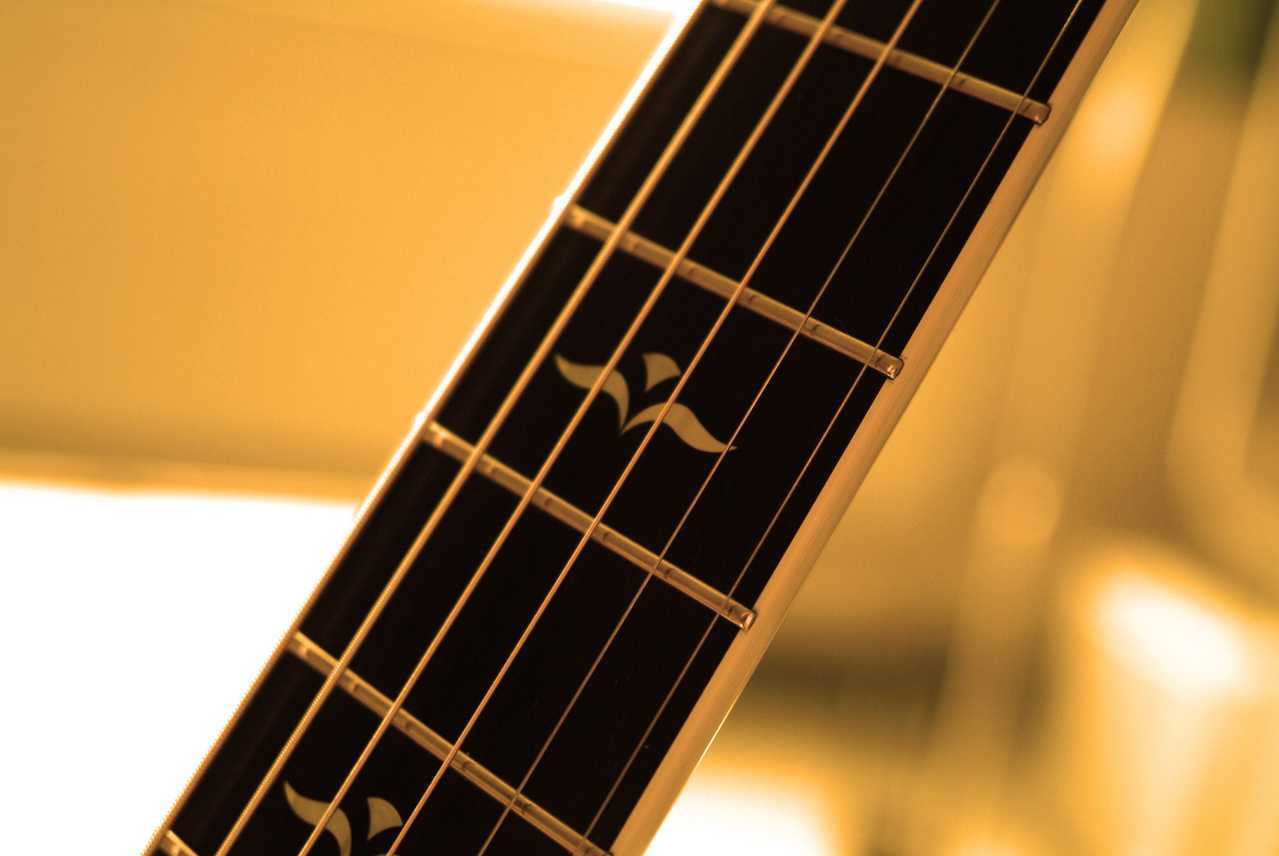Some people like to think of music as being colors, shapes, or tastes. Personally, I prefer to think of it as being similar to repetitive patterns of numbers. This is surprising to me because I’m not a math guy. But studying music has shown me that every bit of the tonal music I hear is connected by patterns and can be constructed by using simple formulas. These formulas create patterns that can be moved around and repeated perfectly in context to any key in music. The circle of fifths is a great explainer for what different keys of music are in music and how we can build them. Memorizing the circle of fifths can help you understand music theory and be able to compose or improvise music in a powerful new way. I’m going to walk you through some of the uses of this incredible tool, but first, let’s talk about what the circle of fifths is and where it came from.
Origin of The Circle of Fifths
The history of this amazing basic music theory concept dates back to 1679 when a composer named Nikolai Diletskii wrote a revolutionary treatise on music composition. The treatise articulated theories and ideas found in polyphonic compositions based in Western music and is famous for being the first text that mentions the circle of fifths. More than four centuries later, Diletskii’s circle of fifths is still widely taught and used within music education and composition.
How to Build The Circle of Fifths
Building this incredible music theory tool requires us to have at least a little bit of background when it comes to intervals in music. Intervals are the relationship between one note and another within music. The “fifths” part of the circle of fifths comes from the fact that each key is separated by the interval of a fifth.
A Perfect Fifth Between C and G:

Fifths, or Perfect Fifths as they’re usually referred to in music theory, are the interval between one note and another seven half-steps above it. The visuals provided in this article are ones of some keys on a keyboard, but feel free to adapt this knowledge to your particular instrument.
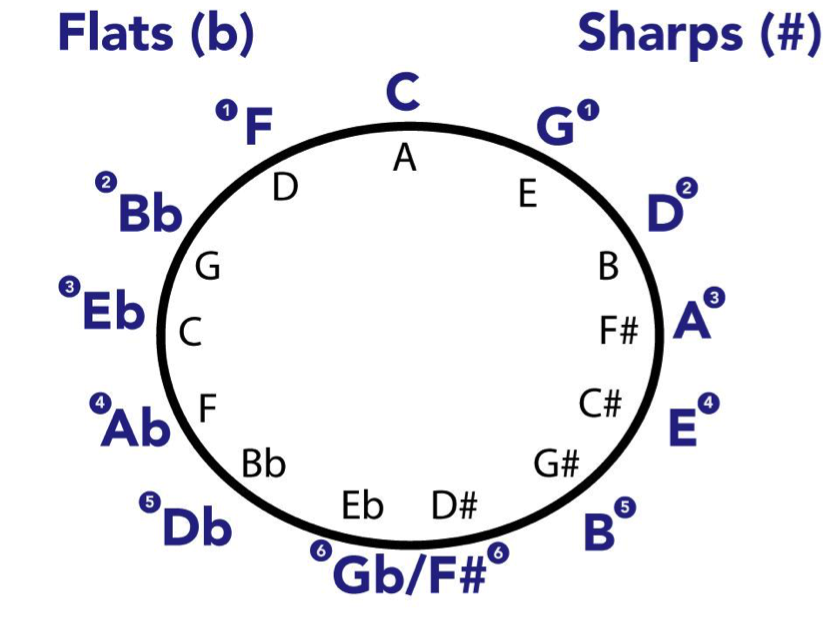
Now that we know a little bit about fifths we can move on to describing the rest of the circle. The top of the circle of fifths features a big “C.” This C and the rest of the letters symbolize key signatures. Moving clockwise from C, the next key we see is a G. The key of G is a Perfect Fifth away from C. The rest of the keys are placed the same distance apart until you reach the bottom of the circle with the key signature of F#.
The Right Side of The Circle
The right side of the circle is the side with sharped key signatures. Starting with the key of G, every next key signature will add a sharp while retaining the other one(s) from the previous key. Every new sharp will be added to the key’s leading tone, which is the note located on the seventh scale degree. For example, the notes that form the key of G major are G-A-B-C-D-E-F#-G, and a sharp was added to the F note. Located a fifth above G, the key of D major features the notes of D-E-F#-G-A-B-C#-D. The F# from the previous key stayed in and we added another sharp on the C, the 7th scale degree. This works the same way for every sharped key on the right side of the circle.
The Left Side of The Circle
The left side of the circle features keys with flatted key signatures. The first key is F, which has one flatted note on the fourth scale degree. Every next key signature will add a flatted note on the fourth scale degree while retaining the one(s) from earlier keys. For example, the F major scale is F-G-A-Bb-C-D-E-F. The next key in the circle is Bb, which features the notes of Bb-C-D-Eb-F-G-A-Bb. It works the exact same way all the way down the circle until you reach the key of Gb.
Parallel Minor Keys
So far, everything we’ve talked about here explains the major keys in the circle of fifths, but the circle is also helpful for explaining how minor keys are constructed. Each key signature shares its DNA with a parallel minor key. A major key’s parallel minor is located a minor 3rd, or three half-steps, below its first scale degree. Using the key of C major as an example, a parallel minor key can be found on the note of A located a minor 3rd below the C note.

Major keys and their minor counterparts both share the same notes:
C Major Scale:

A Minor Scale:

The parallel minor keys are located in the inner part of the circle of fifths. Just like the major keys, minor keys are separated by the interval of a fifth. By the way, there are three different types of minor keys: natural, melodic, and harmonic. The minor keys in the circle of fifths are natural.
How to Use The Circle of Fifths
The circle of fifths is a helpful system of understanding the natural connections within the music we hear. It’s a great visual that can help us to learn about and memorize key signatures. Thinking about how many flats and sharps there are in various key signatures can be intimidating, but the circle of fifths gives us everything we need to know in a nice wrapped up package that’s easy to understand.
When we write music or train our ears to identify intervals and chord progressions, the circle of fifths can serve as a helpful guide. The circle of fifths shows us which key signatures are closely related and which ones aren’t. For example, the keys of C and G major are closely related and share most of the same notes, but the keys of C and F# are not closely related and share only one of the same notes:
C Major:

F#Major:

Music theory can be hugely intimidating for a lot of musicians, but it can be used as an amazing tool that we can use to understand everything about why music works the way it does. After taking the time to memorize the circle of fifths, hopefully you’ll begin to see, hear, and understand music in a completely different way. For more helpful articles about the world of music, check out the Musika Lessons blog.

